Menu
Math Revision 17.2 - Operations with Sets
Please provide a rating, it takes seconds and helps us to keep this resource free for all to use
In addition to the revision notes for Operations with Sets on this page, you can also access the following Sets learning resources for Operations with Sets
| Tutorial ID | Title | Tutorial | Video Tutorial | Revision Notes | Revision Questions |
|---|---|---|---|---|---|
| 17.2 | Operations with Sets |
In these revision notes for Operations with Sets, we cover the following key points:
- What is the intersection of sets? What is the symbol used to show the intersection?
- How to find the intersection of two or more sets?
- What are the properties of sets intersection?
- What are the properties of union of sets.
- How to show the intersection/union of sets using the Venn diagram?
- How to express the operations with number sets in a number line?
- What is the difference between two sets? How to find it?
- What is the difference between the complement of one or more set(s).
- How to find the number of elements in a union set?
- How to solve problems with sets?
- What are the distributive laws?
- What are the properties of difference and complement?
- What do the de Morgan Laws speak about?
Operations with Sets Revision Notes
The intersection of two (or more) sets A and B is a new set which contains only the common elements of the two (or more) original sets. The symbol used to indicate the intersection operation is '∩'.
The word 'AND' describes the intersection of two sets in the sense that the intersection set must include only the elements of set A AND B at the same time to qualify for being part of the intersection set A ∩ B.
When expressing the intersection of sets using the Venn diagram method, we must draw two intersecting Venn diagrams, where the common elements appear only once in the intersection region.
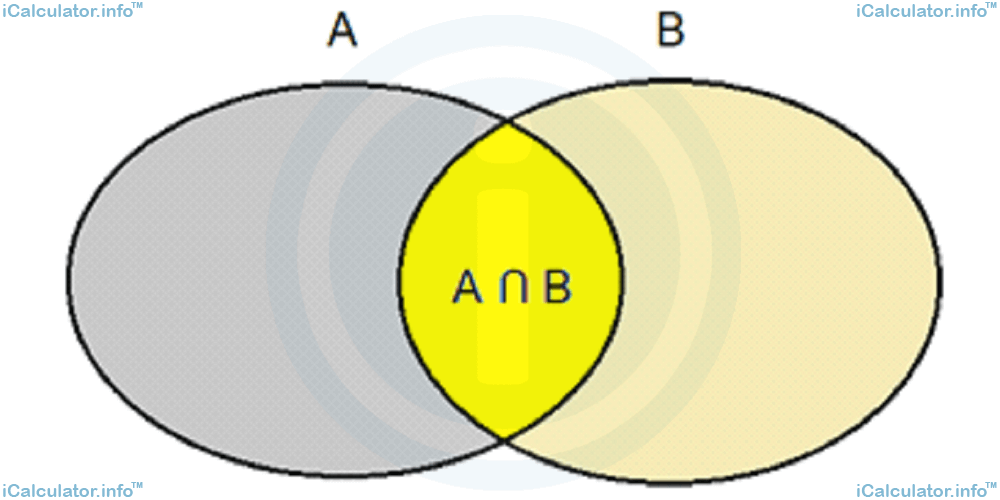
Let A, B and C be three sets. The following properties regarding their intersection are true:
- A ∩ A = A (idempotent law)
- A ∩ B = B ∩ A (commutative property)
- (A ∩ B) ∩ C = A ∩ (B ∩ C) (associative property)
- A ∩ ∅ = ∅ (identity law)
- A ∩ U = A (intersection with the universal set)
Sometimes we want to include all elements of two given sets A and B, where it is enough that one element to be part of at least one of the original sets in order to be included in the new set. This new (inclusive) set is called the union of two sets A and B and is represented through the symbol '∪'. Like in the case of the intersection between two sets, the common elements are written only once in the union set.
When expressed using the Venn diagram method, the union set has the following design.
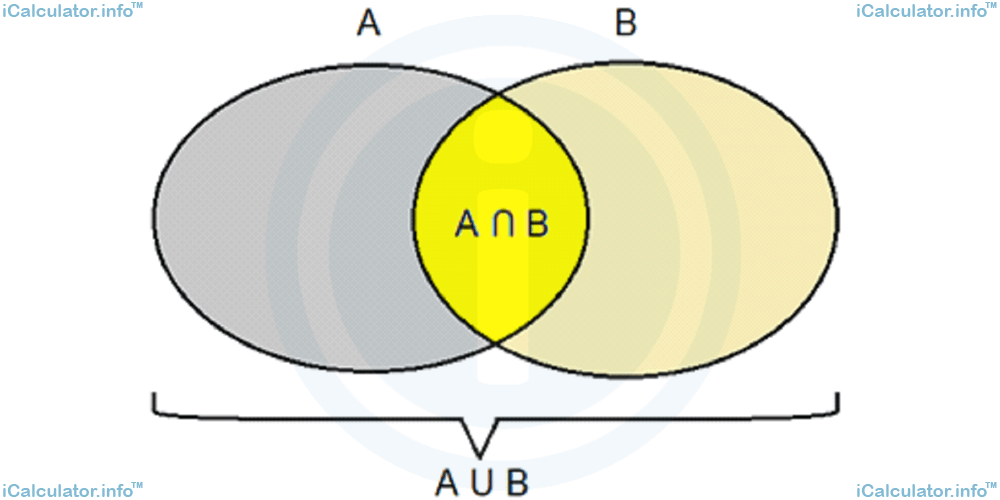
The word 'OR' is used to describe the union of two or more sets in the sense that an item (usually a number) must be an element of set A OR of set B in order to be an element of the union set A ∪ B.
Let A, B and C be three sets. The following properties regarding the union are true:
- A ∪ A = A (idempotent law)
- A ∪ B = B ∪ A (commutative property)
- (A ∪ B) ∪ C = A ∪ (B ∪ C) (associative property)
- A ∪ ∅ = A (identity law)
- A ∪ U = U (union with the universal set)
Another method used to represent various sets and operations with them is by showing them in the number axis, as shown in the table below. This method is particularly useful when dealing with real number sets, where it is impossible to identify two consecutive elements because there is an infinite number of elements between any two real numbers.
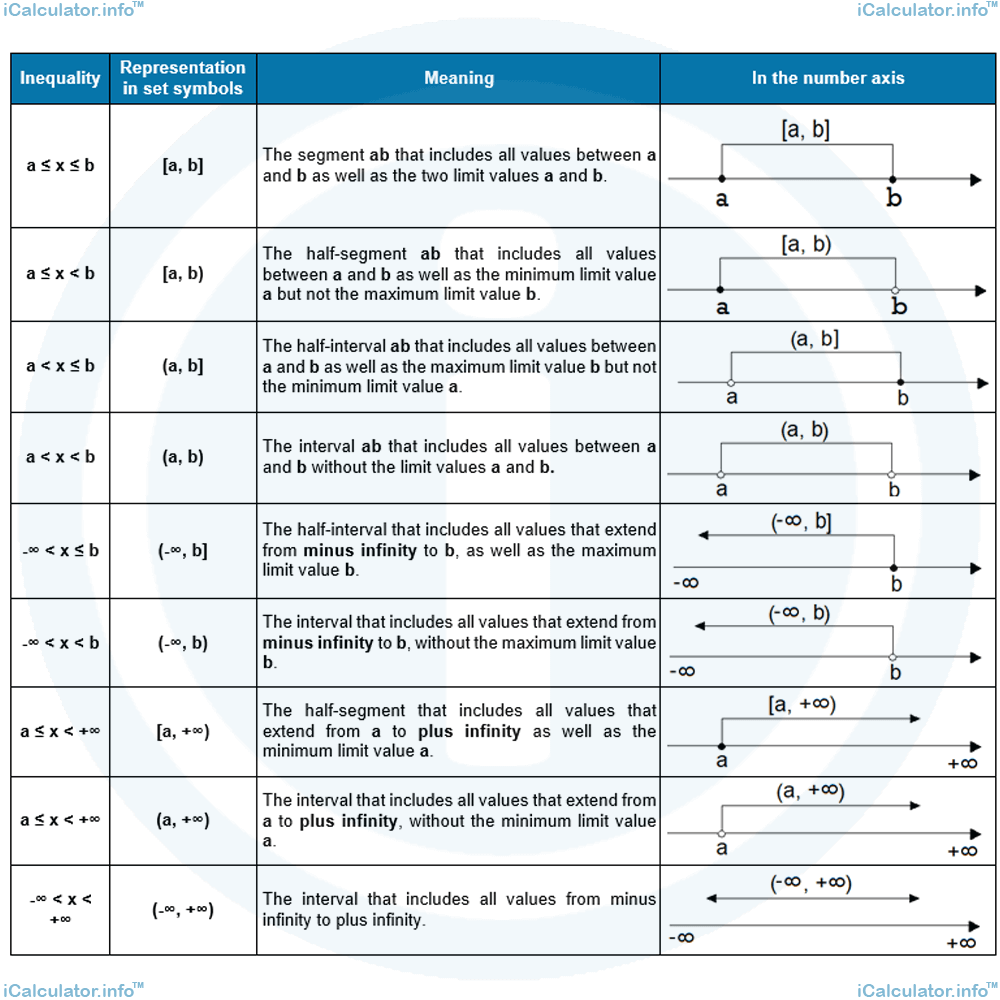
In intersection of two sets A and B shown on a number line we consider only the double zone determined by the two individual sets, while in the union of two sets A and B we consider the entire zone determined by at least one of the original sets.
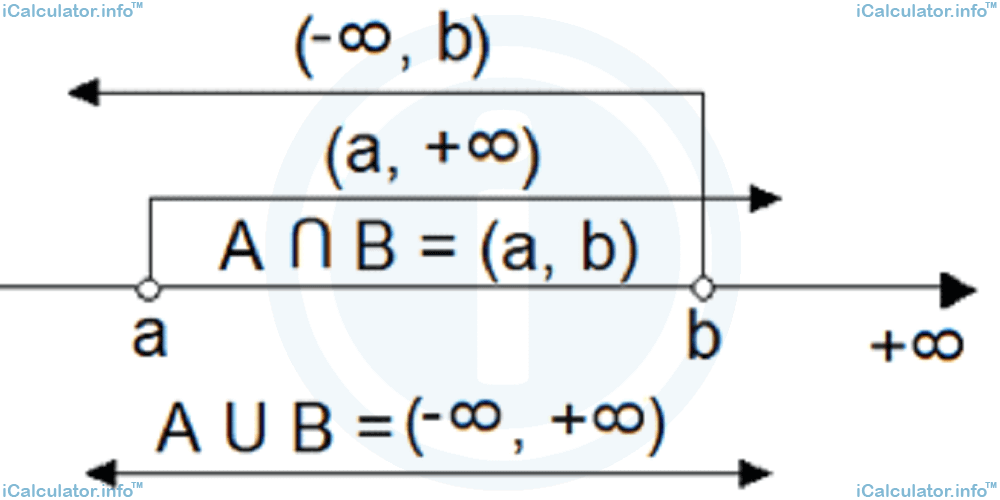
By definition, the set of elements that are in A but not in B is called the difference of sets A and B.
We write A - B or A \ B and say "A difference B". we can find the difference through the following operation:
Likewise, we can find B \ A by using the same procedure. Thus,
All the above operations with sets are shown in the diagram below for a better understanding.
By definition, the complement of a set A (we denote it as A') is the set of all elements of the universal set outside A.
In a certain sense, the complement of a set gives the difference between the universal set and that specific set.In diagrams, we usually express the universal set by a rectangle while the sets concerned are all represented through Venn diagrams (ellipses), as shown below.

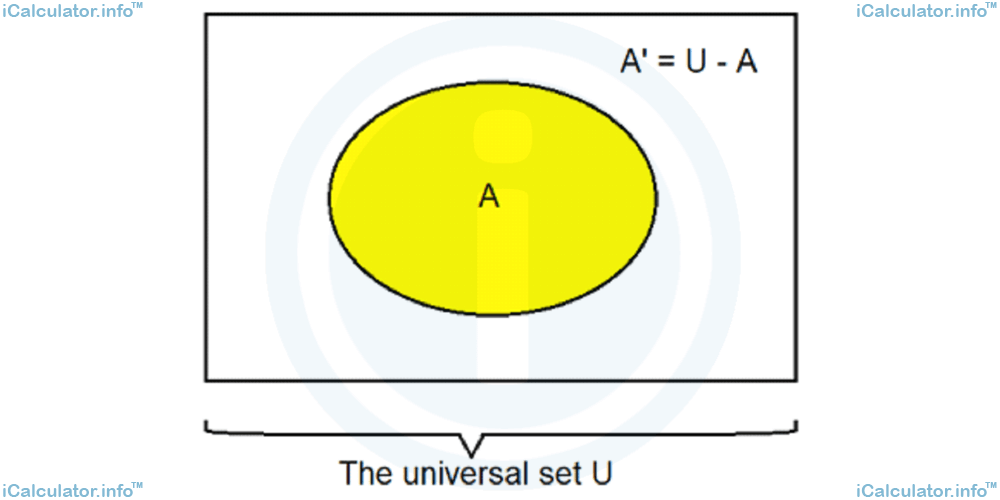
The number of elements contained in a union set is calculated using the formula
where n stands for the number of elements in a given set. This formula can be used for more than two sets as well.
There are a lot of real-life situations that involve operations with sets, where the most typical are those involving people who speak languages, students in classes, etc.
Other properties of sets besides those discussed above include Distributive Laws, Complement Properties and Difference Properties.
1. Distributive Laws
Let A, B and C be three sets. The following properties regarding them are true:
- ∩ is distributive over ∪ both from left and right. In symbols, we write A ∩ (B ∪ C) = (A ∩ B) ∪ (A ∩ C)and(A ∪ B) ∩ C = (A ∩ C) ∪ (B ∩ C)
- ∪ is distributive over ∩ from both left and right. In symbols, we write A ∪ (B ∩ C) = (A ∪ B) ∩ (A ∪ C)and(A ∩ B) ∪ C = (A ∪ C) ∩ (B ∪ C)
2. Complement Properties
Let A be a set which takes the elements from the universal set U. The following properties regarding them are true:
- A ∪ A' = U
- A ∩ A' = ∅
- U' = ∅
- (A')' = A
- ∅' = U
3. Difference Properties
- A - B ≠ B - A
- A - ∅ = A
- (A - B) ∩ (B - A) = ∅
- A - A = ∅
- A - B = A ∩ B′
- If A ⊂ B then A - B = ∅.
De Morgan Laws are two rules that deal with the complements of two given sets A and B. They are:
- (A ∪ B)′ = A′ ∩ B′
- (A ∩ B)′ = A′ ∪ B′
Whats next?
Enjoy the "Operations with Sets" revision notes? People who liked the "Operations with Sets" revision notes found the following resources useful:
- Revision Notes Feedback. Helps other - Leave a rating for this revision notes (see below)
- Sets Math tutorial: Operations with Sets. Read the Operations with Sets math tutorial and build your math knowledge of Sets
- Sets Practice Questions: Operations with Sets. Test and improve your knowledge of Operations with Sets with example questins and answers
- Check your calculations for Sets questions with our excellent Sets calculators which contain full equations and calculations clearly displayed line by line. See the Sets Calculators by iCalculator™ below.
- Continuing learning sets - read our next math tutorial: Sets Definition and Notation. Representing Sets
Help others Learning Math just like you
Please provide a rating, it takes seconds and helps us to keep this resource free for all to use
We hope you found this Math tutorial "Operations with Sets" useful. If you did it would be great if you could spare the time to rate this math tutorial (simply click on the number of stars that match your assessment of this math learning aide) and/or share on social media, this helps us identify popular tutorials and calculators and expand our free learning resources to support our users around the world have free access to expand their knowledge of math and other disciplines.